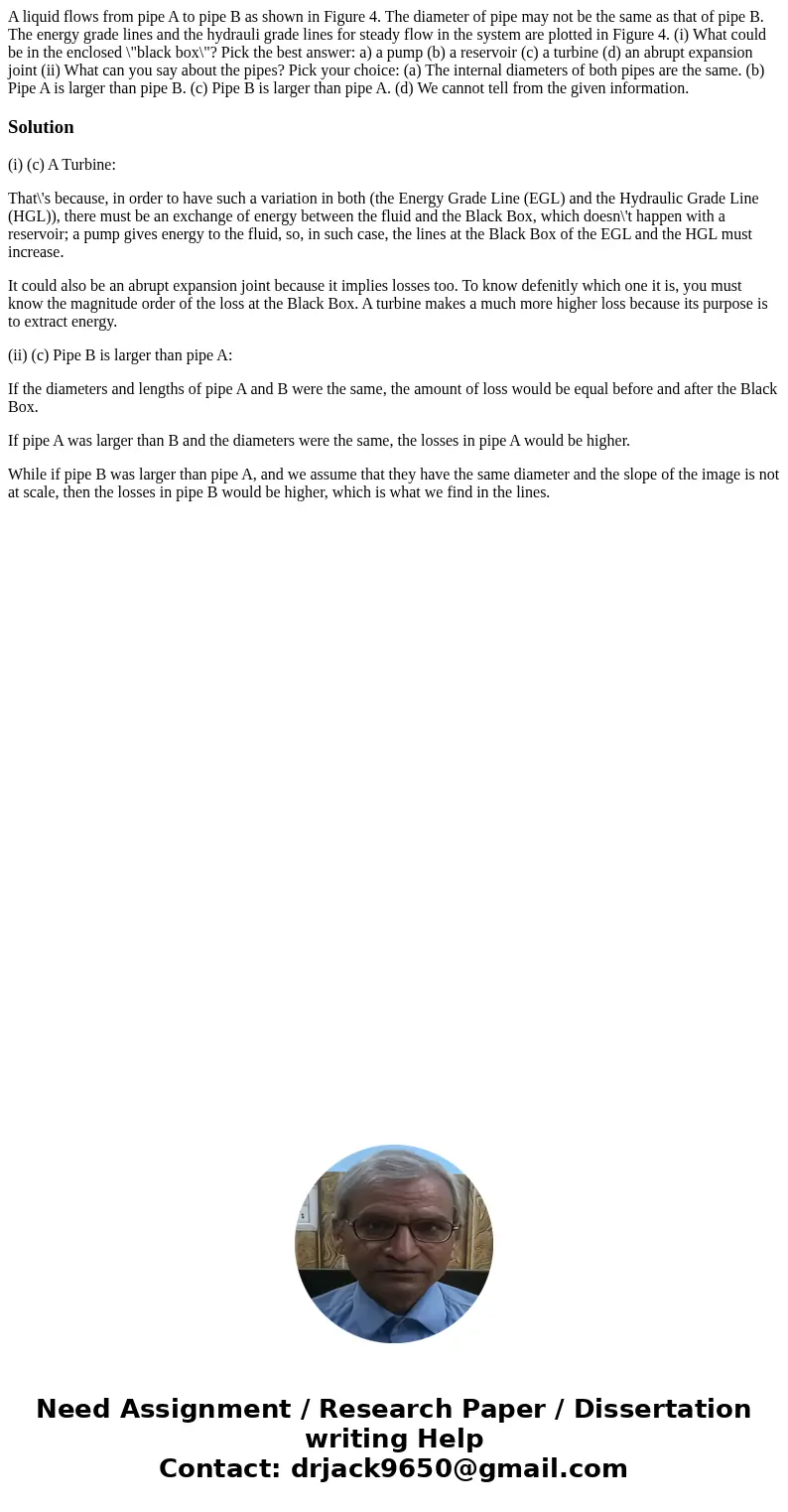A liquid flows from pipe A to pipe B as shown in Figure 4 Th
Solution
(i) (c) A Turbine:
That\'s because, in order to have such a variation in both (the Energy Grade Line (EGL) and the Hydraulic Grade Line (HGL)), there must be an exchange of energy between the fluid and the Black Box, which doesn\'t happen with a reservoir; a pump gives energy to the fluid, so, in such case, the lines at the Black Box of the EGL and the HGL must increase.
It could also be an abrupt expansion joint because it implies losses too. To know defenitly which one it is, you must know the magnitude order of the loss at the Black Box. A turbine makes a much more higher loss because its purpose is to extract energy.
(ii) (c) Pipe B is larger than pipe A:
If the diameters and lengths of pipe A and B were the same, the amount of loss would be equal before and after the Black Box.
If pipe A was larger than B and the diameters were the same, the losses in pipe A would be higher.
While if pipe B was larger than pipe A, and we assume that they have the same diameter and the slope of the image is not at scale, then the losses in pipe B would be higher, which is what we find in the lines.

 Homework Sourse
Homework Sourse